Automation has become a key to optimizing business performance and processes in the dynamic world of digital technology and the rise of SaaS. The WordPress ecosystem is no exception to this trend, requiring the automation of manual and repetitive tasks to enhance efficiency and productivity.
This practical guide reveals how to leverage automation tools to streamline the management of your WordPress site, improve user experience, and boost your team’s operational efficiency. Discover how plugins and add-ons can transform your approach and unlock the full potential of your WordPress site.
What is an Automation in WordPress?
Automation in WordPress is about using tools to set up automated workflows. These workflows handle repetitive or complex tasks automatically, allowing you to focus on more strategic aspects of managing your website and business.
Automation is built on two key concepts: triggers and actions.
Triggers: A trigger is an event that automatically starts a process. For instance, when a user submits a form on your site, this can trigger an automatic confirmation email or add the user to a mailing list.
Actions: An action is a task that happens automatically in response to a trigger. This could be sending an email, adding a user to a database, or sharing content on social media.
By combining triggers and actions, you can create powerful workflows that simplify the daily management of your WordPress site. For example, you can set up a workflow that automatically shares new blog posts on your social media accounts or sends comments needing moderation to a tool like Notion.
Benefits of using automation for WordPress websites
As a WordPress user, automation offers you a range of benefits, from simplifying the daily management of your site to optimizing your business processes.
One of the most obvious advantages is time savings. Repetitive tasks, such as organizing your leads in a CRM, sending welcome emails, or updating content, can be handled automatically. This frees up your time to focus on higher-value activities that will drive your business growth.
Automation also enhances the efficiency of your business operations. Automated workflows ensure process consistency, reduce human errors, and guarantee that tasks are executed uniformly.
Additionally, automation helps reduce operational costs. Spending less time on manual tasks means fewer resources are needed to manage them, leading to long-term savings.
The last but not least, automation enables better data management by allowing automated transfers to your preferred tools like Airtable. Such integrations help centralize data from WordPress and process it more flexibly on specialized tools. This leads to more accurate insights and improved analysis capabilities.
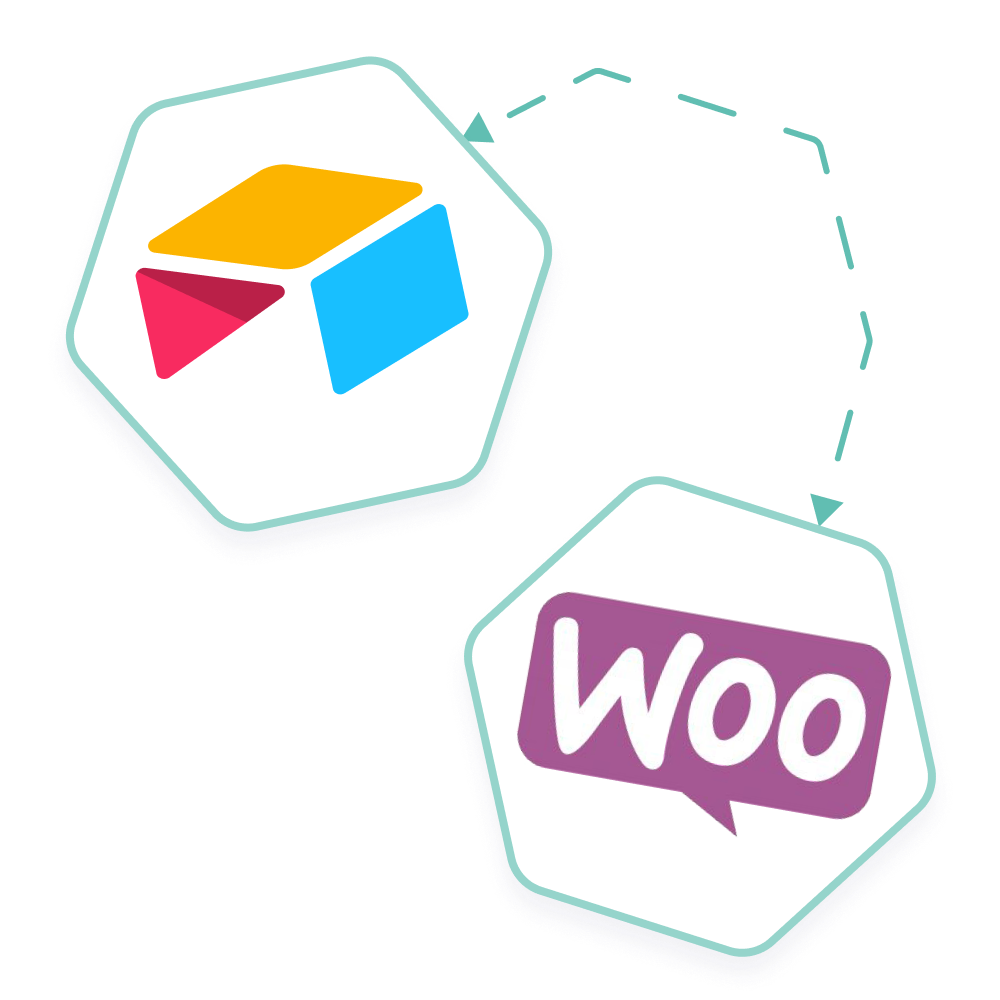
Easily manage your e-commerce website from Airtable
Get your WooCommerce store synchronized with Airtable: save time and increase business productivity.
- Product catalog management
- Product updates
- SEO plugins integration
- Real-time order monitoring
- Inventory management
- And much more
The best tools for automation in WordPress
WordPress automation relies on various tools that facilitate the creation of efficient, integrated workflows. The choice of tool depends on your needs and the complexity of your processes. However, here’s an overview of the main tools available.
AutomatorWP
AutomatorWP is a leading plugin that allows you to create automated workflows by connecting various actions and triggers on your WordPress site. You can set up automation based on specific events, such as a WooCommerce product purchase or a member signing up for a course. It features integrations with over 200 WordPress plugins, enabling you to customize and extend your automation according to your needs.
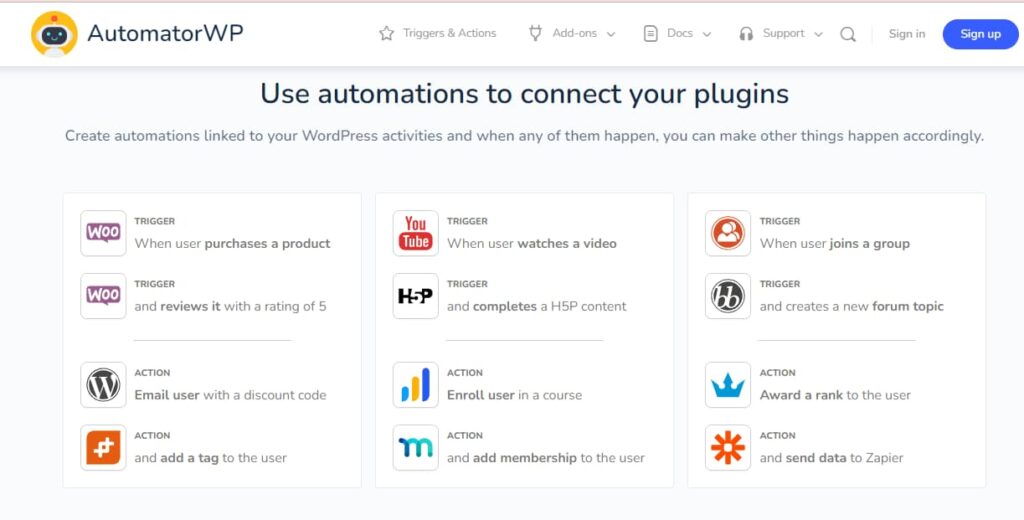
Pros:
- Open source: AutomatorWP is an open-source plugin available in the WordPress directory.
- Extensive capabilities: It connects with a wide range of plugins and external services.
- Unlimited Triggers and Actions: It allows for unlimited triggers and actions, offering great flexibility to design complex workflows.
Cons:
- Complex learning curve: mastering AutomatorWP can be challenging due to its extensive and complex features.
- High cost for add-ons and support: The cost can become relatively high if you need access to add-ons and advanced options.
Uncanny Automator
Uncanny Automator is another leading plugin for WordPress automation. This plugin allows you to define triggers and actions to automate processes by connecting your WordPress site to hundreds of plugins, sites, and applications. Uncanny Automator is particularly known as a no-code automation solution, offering an intuitive and flexible way to create advanced workflows.
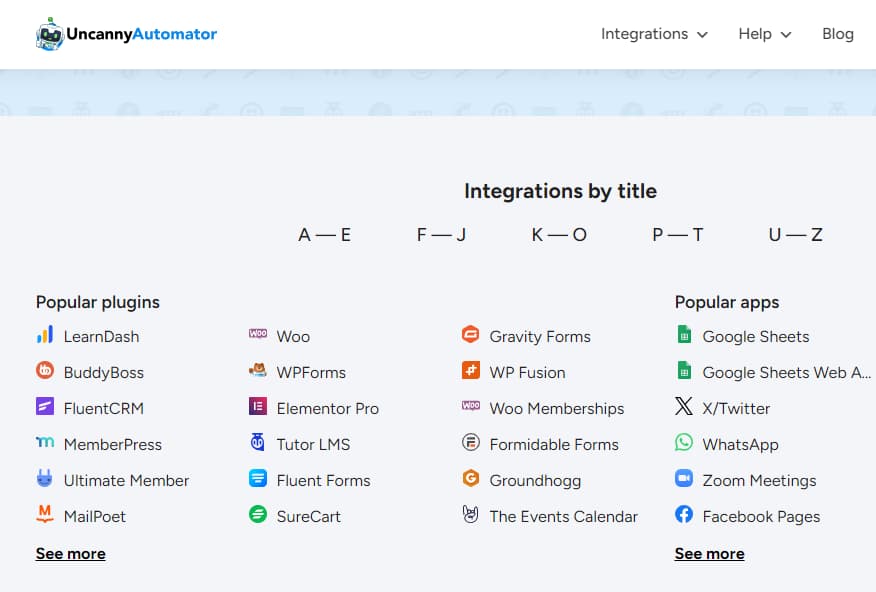
Pros:
- Intuitive interface: User-friendly and easy to use, ideal for non-technical users.
- Automation recipes: You can create automation using a wide range of simple and modular recipes.
- Wide range of integrations: Supports a variety of plugins and third-party tools, providing extensive integration flexibility.
Cons:
- Limitations in the free version: Some advanced features are only available in the paid version, which may limit options for free users.
- Advanced options: More robust solutions may be less suited for complex or highly customized automation.
Flowmattic
Flowmattic is a plugin for creating automated workflows in WordPress. It stands out for its drag-and-drop editor, which lets you design automations with ease. You can quickly set up triggers, actions and complex conditions without coding. Flowmattic is particularly useful for companies wishing to quickly deploy customized processes.
Flowmattic is a plugin for creating automated workflows in WordPress. It stands out for its drag-and-drop editor, which lets you design automations with ease. You can quickly set up triggers, actions and complex conditions without coding. Flowmattic is particularly useful for companies wishing to quickly deploy customized processes.
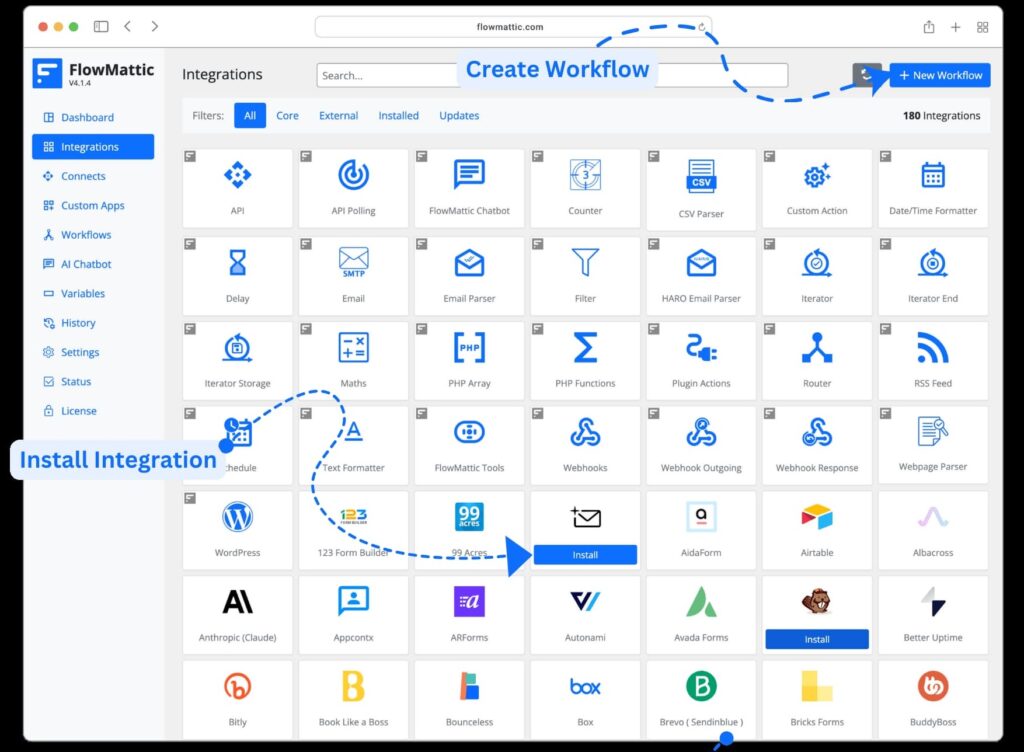
Pros :
- Drag-and-drop editor: Simple, visual interface for fast workflow creation.
- Advanced customization: Flexibility in designing and managing automations according to specific needs.
- Multiple integrations: Compatible with a wide range of WordPress plugins, SaaS, and third-party applications.
Cons:
- Plugin dependency: Some features may require paid third-party modules.
- Subscription required: No free version, except for a trial period.
Zapier
Zapier is a powerful automation platform that connects a wide range of third-party applications and services. With Zapier, you can create “zaps” to automate tasks between different tools, such as CRMs, financial management platforms, or email marketing tools.
The Zapier plugin allows you to leverage the platform’s extensive automation directly for your WordPress site. This allows you to automate processes, such as automatically sending invoices generated by a form to your accounting software or synchronizing customer data with a CRM.
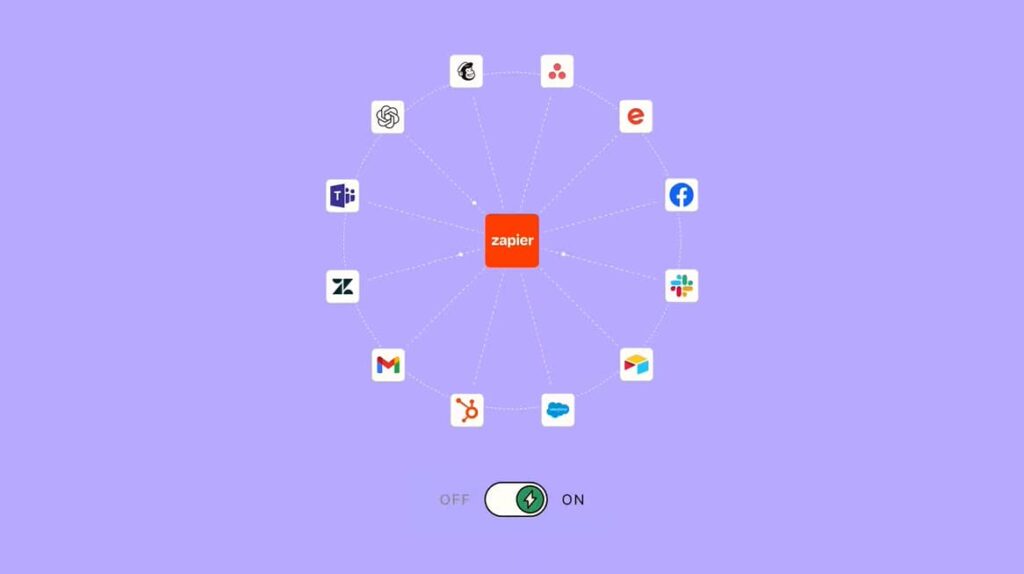
Pros:
- Wide range of integrations: connects to hundreds of applications, offering impressive flexibility.
- Free version: a free version is available for simple automation.
Cons:
- High cost: despite the free version, advanced automation may require a premium subscription, which can quickly become too expensive. The number of zaps and integrations is limited in the free plan.
- Limited for complex tasks: Zapier quickly becomes restricted and complicated for advanced workflows with multiple triggers, making some automation impossible to set up.
WP connect: custom add-ons and plugins for automation in WordPress
The add-ons and plugins developed by WP connect offer an ideal solution for automation in WordPress. The WP connect team provides a full range of custom modules to extend WordPress functionality and facilitate integration with external tools such as Airtable, Notion, Brevo (ex Sendinblue), and SendGrid, as well as form plugins like Gravity Forms and WPForms.
These solutions stand out for their customization for the WordPress ecosystem and seamless integration with specific tools. The WP connect add-ons and plugins make it easy to connect WordPress to project management, email marketing, or content management services, ensuring personalized, efficient, and long-term maintainable automation.
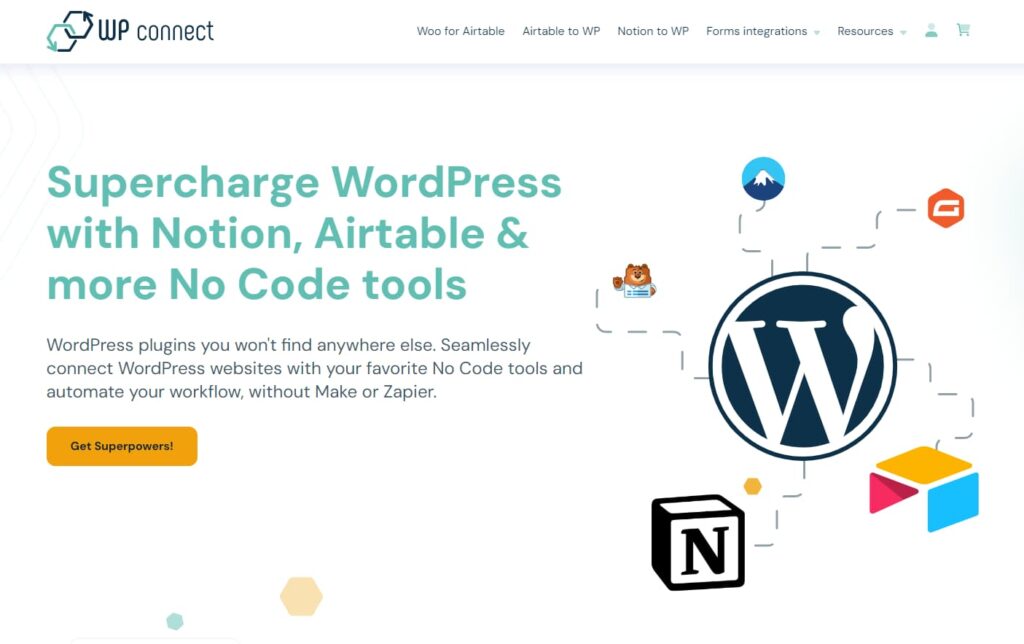
Pros:
- Native integration: developed specifically for WordPress, these add-ons guarantee a seamless connection with your favorite tools.
- Flexibility and customization: well-designed to adapt to your specific needs, these add-ons enable you to create customized automations for your business.
- Fast integration: easy to use with no coding or technical skills required.
- Dedicated support: with WP connect, take advantage of dedicated, personalized technical support to meet your needs.
- Free version and attractive pricing: Our add-ons offer a free version that’s sufficiently complete to meet most of your needs. Premium options come with clear, transparent pricing, so you can make decisions with confidence.
Cons:
- Ecosystem focus: WP connect add-ons are optimized primarily for WordPress solutions, which may limit integration with other external services.
- A limited number of integrated services: While the add-ons offer extensive customization, the number of services and applications they can integrate with is limited compared to other options.
3 Real-life examples of automation applications in WordPress
To illustrate how automation can simplify and enhance the management of your WordPress site, here are a few concrete examples of applications.
Integration with Project Management tools
The WP connect add-ons enable automatic data synchronization between WordPress and project management and collaboration tools like Notion or Airtable. For example, with our Notion WP Sync add-on, you can synchronize the publication of articles and updates on your WordPress site directly from Notion. You can also migrate your site from Notion to WordPress, manage events, publish courses, and much more, all while streamlining your project management.
Contact Management and CRM
With the plugins and solutions outlined below, you can automate the integration between WordPress and your CRM.
For example, when a user submits a form via Gravity Forms or WPForms on your site, their information can be automatically synced to a specific list on SendGrid using our custom add-on. Additionally, we offer several other add-ons that simplify workflows and enhance customer relationship management with CRMs like Brevo, SendGrid, or even Airtable. Discover our solutions for Gravity Forms.
Streamline and enhance content management
Another practical example is automating the transfer of data between your content management tools and WordPress to optimize workflows and increase efficiency. This approach helps centralize information management, reduce manual tasks, and minimize the risk of errors.
For instance, our Air WP Sync plugin streamlines the synchronization of data from Airtable to WordPress. It automates the integration of content such as articles, job listings, or real estate advertisements from Airtable to your WordPress site. This automation ensures that all your data is up-to-date and facilitates collaboration with your teams. Similarly, it simplifies content management, improving information accuracy and freeing up time to focus on higher-value tasks.
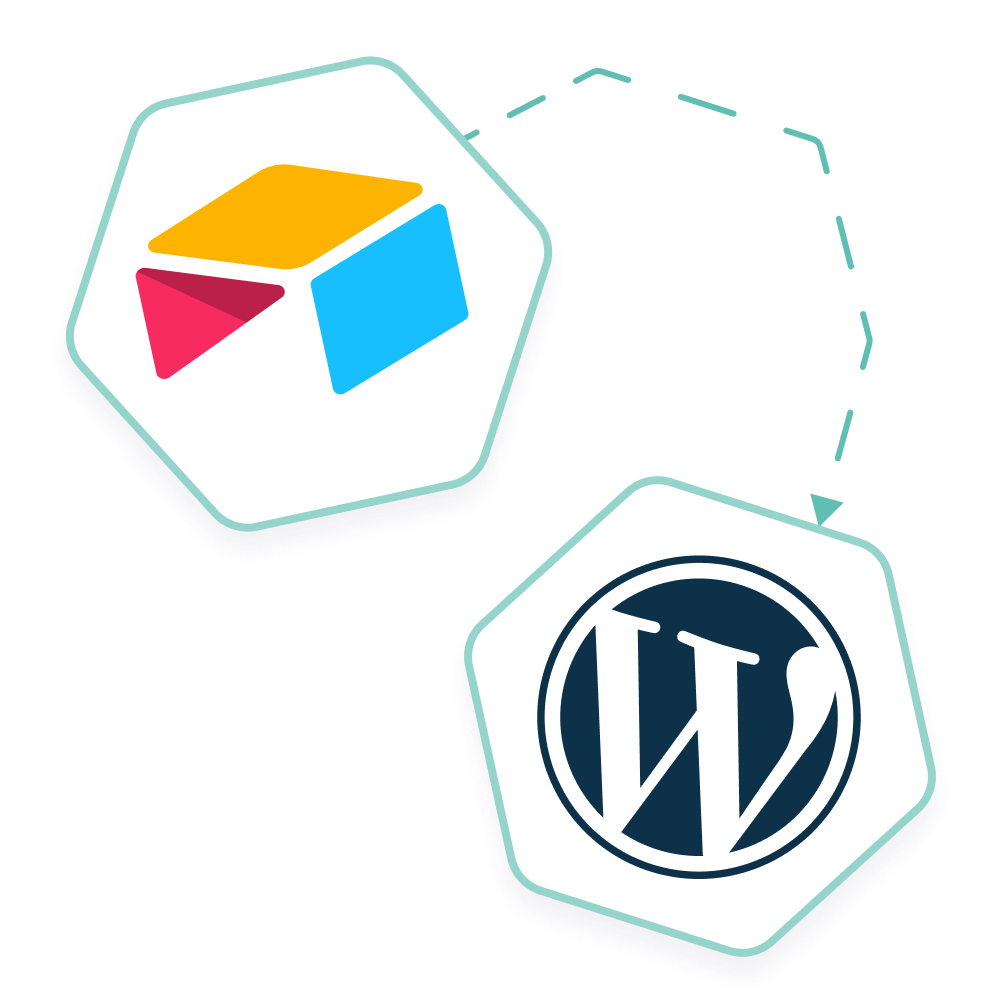
Streamline your workflow with Airtable and WordPress
Easily manage your WordPress site from Airtable: publish and update blog content and pages, manage users, job offers, SEO and much more. Simple and effortless integration with no coding required.
Finals thoughts
Automation in WordPress offers exceptional opportunities to streamline your processes, save time, and reduce costs. By using the right tools, you can enhance data management, optimize workflows, and provide a seamless user experience.
In this guide, we have presented various plugins and add-ons to leverage the power of automation on your WordPress site. Embrace these solutions to elevate your WordPress site to new heights of efficiency and performance today.




